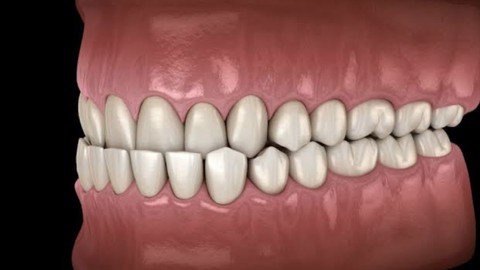
Published 2/2023
MP4 | Video: h264, 1280×720 | Audio: AAC, 44.1 KHz
Language: English | Size: 498.50 MB | Duration: 0h 51m
Master tools to accessories and manage Class III Cases with Interceptive Orthodontics
What you’ll learn
Understand Class III Malocclusion. Diagnosis and management at early age
Art to choose right appliance for right age in management of Class III Malocclusion
Know how to diagnose Class III malocclusion clinically and with help of radiography
Learn retention protocol and appliance selection in early management of Class III Malocclusion
Requirements
Final year dental students
Dental practitioner with interest in orthodontics working in Pedriatic setup
Post graduate students treating Class III cases
Description
Due to increasing awareness regarding malocclusion and more concern about esthetic in the general population in present days, it is necessary for a dentist to have immense knowledge and skills about the diagnosis and treatment planning of the malocclusion to meet patient’s expectations. Nowadays, the patient reports to a clinician at very early age for the correction of malocclusion. The prevalence rate of Class III malocclusion varies according to different racial categories. The mean incidence rate in Caucasians is 1%-4%,[1] with higher being found in Asians (4%-14%). The etiology of Class III malocclusion is multifactorial. However, hereditary is the main etiological factor. Other factors include environment, habits, and race. Class III malocclusion is mainly due to skeletal component, dentoalveolar component, and combination of both. Prognathic mandible, retrognathic maxilla, or combinations of both are the features of skeletal Class III malocclusion. Dentoalveolar component presents with retruded mandibular incisors and protruded maxillary incisors for dentoalveolar compensation.Class III malocclusion is of two types: (1) True Class III malocclusion and (2) Pseudoclass III/functional Class III malocclusion. PseudoClass III malocclusion may be due to high points while occluding teeth or functional shift. The diagnosis and treatment planning can be done considering the following: (a) centric relation (CR), (b) family history, (c) interincisal relationship, and (d) cephalometric findings.[4] True Class III malocclusion mostly has a positive family history. Cephalometric findings may present with increased Sella-Nasion-B point (SNB) angle and small or decreased Sella-Nasion-A Point (SNA) angle, retroclination of lower incisors, and less incisor mandibular plane (MP) angle. Cephalometric findings of pseudo/functional Class III malocclusions show normal SNA, slight increase in SNB angle, retroclined maxillary incisors, and normal lower incisors. Family history is usually absent. The functional shift can be seen.The characteristic features of Class III malocclusion are present at an early age, usually between 3 and 5 years of age. If left untreated, the Class III malocclusion or severe anterior crossbite may worsen, with the majority of these patients ultimately requiring orthognathic surgery as adults. The treatment in all developing Class III cases should be undertaken as soon as the abnormality is diagnosed to prevent it from becoming permanent and resulting in a full-blown Class III malocclusion. It provides more pleasing facial esthetics (the lip posture and facial appearance), thus improving the psychosocial development of a child. Various treatment options available for the management of developing Class III malocclusion are as follows: (1) functional appliances such as reverse twin block, Frankel appliance, and the removable mandibular retractor; (2) orthopedic appliances such as chin cap and face mask; and (3) orthodontic appliances, namely removable maxillary expansion plate or fixed orthodontic appliance with expanded upper arch wire. A treatment plan may be chosen depending on the amount of maxillary growth restriction, mandibular plane angle, the soft-tissue profile, and the age of the patient.
Overview
Section 1: Introduction
Lecture 1 Introduction – Class III Malocclusion
Lecture 2 Diagnosis of Class III Malocclusion
Lecture 3 Treatment of Class III Malocclusion – Aim and Objectives of early Manageme
Lecture 4 Appliance Selection for Early Management of Class III Malocclusion
Lecture 5 Retention Protocol for Class III Malocclusion Management
Dental student,Post graduate student in orthodontics,Dental practitioner with interest in orthodontics
Homepage
www.udemy.com/course/early-diagnosis-and-management-of-class-iii-malocclusion/
jmjus.Early.Diagnosis.And.Management.Of.Class.Iii.Malocclusion.rar.html
Rapidgator
jmjus.Early.Diagnosis.And.Management.Of.Class.Iii.Malocclusion.rar.html
Uploadgig
jmjus.Early.Diagnosis.And.Management.Of.Class.Iii.Malocclusion.rar
NitroFlare
jmjus.Early.Diagnosis.And.Management.Of.Class.Iii.Malocclusion.rar
